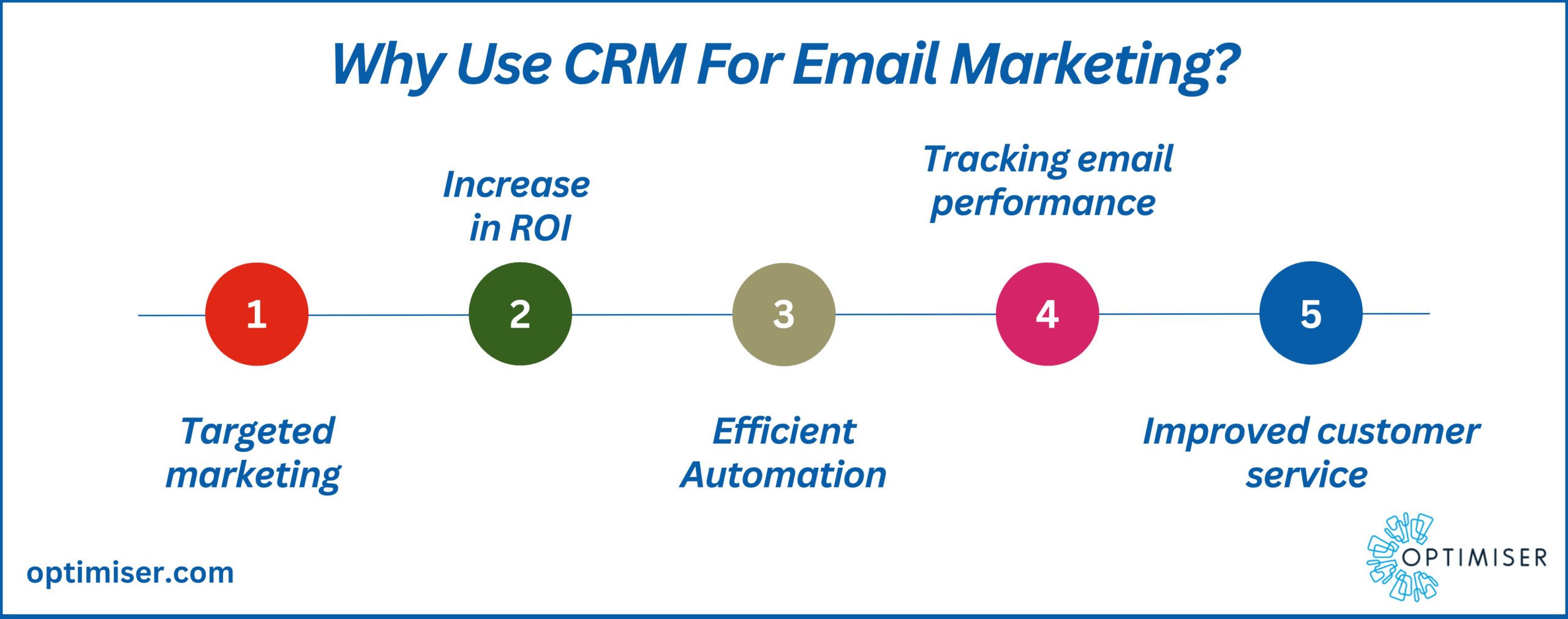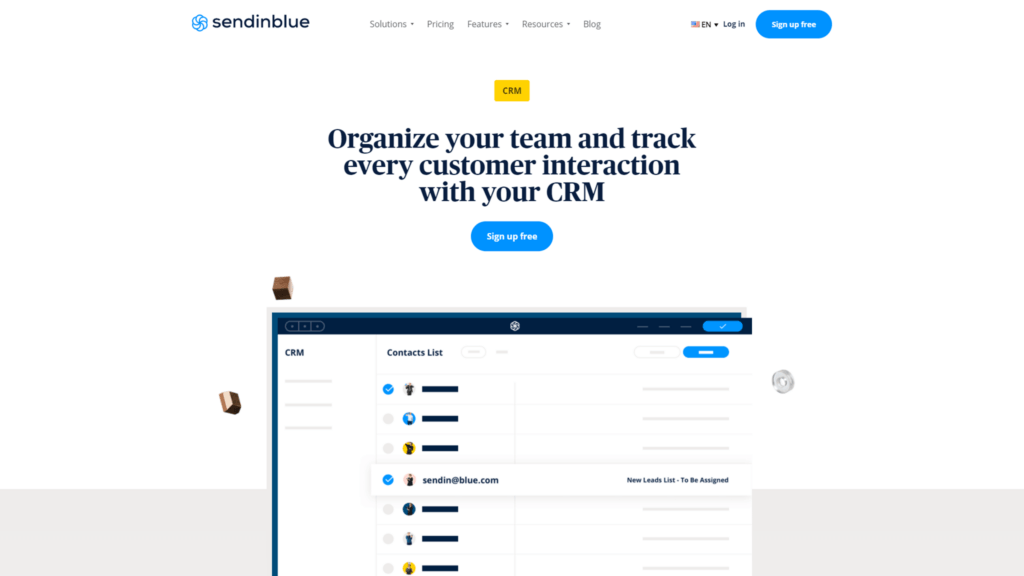
Supercharge Your CRM Marketing with A/B Testing: A Comprehensive Guide
In the ever-evolving landscape of digital marketing, staying ahead of the curve is crucial. One of the most effective ways to optimize your marketing efforts and boost your return on investment (ROI) is through A/B testing. When combined with Customer Relationship Management (CRM) marketing, this powerful strategy can unlock unprecedented levels of customer engagement, conversion rates, and overall business growth. This comprehensive guide delves deep into the world of CRM marketing A/B testing, providing you with the knowledge and tools you need to succeed.
What is CRM Marketing?
Customer Relationship Management (CRM) marketing is a strategic approach that focuses on building and nurturing strong relationships with customers throughout their lifecycle. It leverages CRM software to collect, manage, and analyze customer data, enabling businesses to personalize their interactions, target their marketing efforts more effectively, and ultimately, drive customer loyalty and revenue. CRM marketing encompasses a wide range of activities, including:
- Segmentation: Dividing your customer base into distinct groups based on demographics, behavior, purchase history, and other relevant characteristics.
- Personalization: Tailoring marketing messages, offers, and content to individual customer preferences and needs.
- Automation: Streamlining marketing processes, such as email campaigns, lead nurturing, and customer service interactions, using automated workflows.
- Analytics: Tracking and analyzing key performance indicators (KPIs) to measure the effectiveness of your marketing efforts and make data-driven decisions.
The core goal of CRM marketing is to create a 360-degree view of your customers, allowing you to understand their needs, preferences, and behaviors. This understanding is critical for delivering relevant, timely, and personalized experiences that resonate with your target audience.
The Power of A/B Testing in CRM Marketing
A/B testing, also known as split testing, is a method of comparing two versions of a marketing element (e.g., email subject line, call-to-action button, landing page design) to determine which one performs better. By randomly showing each version to a subset of your audience and measuring their responses, you can gain valuable insights into what resonates with your customers and what doesn’t.
When integrated into your CRM marketing strategy, A/B testing becomes an indispensable tool for optimizing every aspect of your customer journey. It allows you to:
- Improve Email Marketing Performance: Test different subject lines, email content, calls to action, and send times to increase open rates, click-through rates, and conversions.
- Enhance Landing Page Conversion Rates: Experiment with different headlines, images, forms, and layouts to optimize your landing pages for conversions.
- Personalize Website Experiences: Tailor website content and offers to different customer segments based on their behavior and preferences.
- Optimize Customer Segmentation: Refine your customer segments based on their responses to different marketing messages and offers.
- Drive Continuous Improvement: Foster a culture of data-driven decision-making and continuous improvement by regularly testing and iterating on your marketing efforts.
A/B testing is not just about making incremental improvements; it’s about uncovering significant opportunities to boost your marketing ROI and drive substantial business growth. It empowers you to make informed decisions based on data, rather than relying on guesswork or assumptions.
Key Benefits of CRM Marketing A/B Testing
Implementing A/B testing within your CRM marketing strategy offers a multitude of benefits, including:
- Increased Conversion Rates: By optimizing your marketing elements, you can significantly increase the number of leads, sales, and other desired actions.
- Improved Customer Engagement: Personalized and relevant marketing messages resonate more effectively with customers, leading to higher engagement rates.
- Enhanced Customer Satisfaction: By understanding your customers’ needs and preferences, you can provide them with more relevant and valuable experiences, leading to increased satisfaction.
- Reduced Marketing Costs: By optimizing your campaigns, you can reduce wasted spend and improve the efficiency of your marketing efforts.
- Data-Driven Decision-Making: A/B testing provides you with the data you need to make informed decisions about your marketing strategy.
- Faster Learning and Iteration: A/B testing allows you to quickly test and learn from different approaches, enabling you to iterate and improve your marketing efforts more rapidly.
- Increased ROI: Ultimately, the goal of A/B testing is to maximize your return on investment by optimizing your marketing efforts and driving more revenue.
Setting Up Your CRM Marketing A/B Testing Program
Implementing a successful CRM marketing A/B testing program requires careful planning and execution. Here’s a step-by-step guide to get you started:
1. Define Your Goals and KPIs
Before you start testing, it’s crucial to define your goals and the key performance indicators (KPIs) you’ll use to measure success. What are you trying to achieve with your CRM marketing efforts? Are you aiming to increase open rates, click-through rates, conversion rates, or something else? Clearly defining your goals will help you focus your testing efforts and track your progress.
Examples of KPIs to track:
- Email Open Rate: The percentage of recipients who open your email.
- Click-Through Rate (CTR): The percentage of recipients who click on a link in your email.
- Conversion Rate: The percentage of recipients who complete a desired action, such as making a purchase or filling out a form.
- Bounce Rate: The percentage of emails that are not delivered.
- Unsubscribe Rate: The percentage of recipients who unsubscribe from your email list.
- Website Conversion Rate: The percentage of website visitors who complete a desired action.
- Lead Generation Rate: The percentage of website visitors who become leads.
- Customer Lifetime Value (CLTV): The predicted revenue a customer will generate over their relationship with your business.
2. Identify What to Test
Once you’ve defined your goals and KPIs, it’s time to identify the specific elements you want to test. Start by focusing on the areas where you believe you can make the biggest impact. Consider testing the following:
- Email Subject Lines: Experiment with different subject lines to see which ones generate the highest open rates.
- Email Content: Test different layouts, copy, images, and calls to action to see which ones resonate most with your audience.
- Email Send Times: Test different send times to see when your audience is most likely to engage with your emails.
- Landing Page Headlines: Experiment with different headlines to see which ones capture the attention of your visitors.
- Landing Page Layouts: Test different layouts to see which ones are most effective at driving conversions.
- Calls to Action (CTAs): Test different CTAs to see which ones encourage visitors to take action.
- Form Fields: Test different form layouts and the number of fields to optimize for conversion.
- Personalization: Test different levels of personalization to see how they affect customer engagement.
3. Create Your Test Variations
Once you’ve identified what you want to test, create two or more variations of the element you’re testing. Make sure to only change one element at a time to isolate the impact of that specific change. For example, if you’re testing email subject lines, create two different subject lines and send them to different segments of your audience. Ensure that your variations are significantly different to allow for clear results.
4. Segment Your Audience
To ensure the validity of your A/B tests, segment your audience into distinct groups. This will help you compare the performance of each variation fairly. Make sure your segments are representative of your overall audience and that they are large enough to provide statistically significant results. Randomization is crucial to ensure fairness. This ensures that each variation is presented to an unbiased sample.
5. Run Your Tests
Once you’ve created your test variations and segmented your audience, it’s time to launch your tests. Choose a testing platform that integrates with your CRM and email marketing software. Set up your tests and let them run for a sufficient amount of time to collect enough data. The duration will vary based on the element you’re testing, your traffic volume, and the desired level of statistical significance. Be patient and avoid making premature conclusions. Monitor your results closely and make sure to keep track of the performance metrics.
6. Analyze Your Results
After your tests have run for a sufficient amount of time, analyze the results to determine which variation performed best. Look at your KPIs to see which variation generated the highest open rates, click-through rates, conversion rates, and other relevant metrics. Use statistical significance calculators to ensure your results are statistically significant. This means the differences in performance are unlikely to be due to chance. If one variation significantly outperformed the others, that is your winner. It’s essential to use a data-driven approach to make informed decisions.
7. Implement the Winning Variation
Once you’ve identified the winning variation, implement it in your CRM marketing campaigns. This will help you optimize your marketing efforts and improve your results. Deploy the winning version across the appropriate channels and track its performance over time to ensure the changes continue to be effective. Remember to consider the long-term impact of your changes.
8. Continuously Test and Iterate
A/B testing is an ongoing process. Don’t stop testing once you’ve found a winning variation. Continuously test and iterate on your marketing efforts to identify new opportunities for improvement. The market is constantly changing, and what works today may not work tomorrow. Regularly test different aspects of your marketing campaigns to stay ahead of the curve and maximize your ROI. Always be looking for new areas to test and optimize, and keep refining your strategy.
Best Practices for CRM Marketing A/B Testing
To maximize the effectiveness of your CRM marketing A/B testing program, follow these best practices:
- Focus on One Element at a Time: When testing, only change one element at a time to isolate the impact of that specific change.
- Test with a Large Enough Sample Size: Ensure your sample size is large enough to provide statistically significant results.
- Run Tests for a Sufficient Duration: Allow your tests to run for a sufficient amount of time to collect enough data.
- Use Statistical Significance Calculators: Use statistical significance calculators to ensure your results are statistically significant.
- Document Your Tests: Keep detailed records of your tests, including the variations you tested, the results you achieved, and the insights you gained.
- Prioritize Your Tests: Focus on testing the elements that are most likely to have the biggest impact on your results.
- Test Across Multiple Channels: A/B test across email, landing pages, website experiences, and other relevant channels.
- Personalize Your Tests: Personalize your tests based on customer segments to deliver more relevant results.
- Analyze the Results: Analyze the results and use the data to make informed decisions.
- Iterate and Improve: Continuously test and iterate on your marketing efforts to identify new opportunities for improvement.
Tools for CRM Marketing A/B Testing
Several tools can help you implement and manage your CRM marketing A/B testing program. Some popular options include:
- CRM Platforms: Many CRM platforms, such as Salesforce, HubSpot, and Zoho CRM, offer built-in A/B testing capabilities or integrations with other testing tools.
- Email Marketing Platforms: Email marketing platforms, such as Mailchimp, Constant Contact, and ConvertKit, provide A/B testing features for email campaigns.
- Landing Page Builders: Landing page builders, such as Unbounce, Leadpages, and Instapage, offer A/B testing capabilities for optimizing landing page conversion rates.
- A/B Testing Software: Dedicated A/B testing software, such as Optimizely, VWO (Visual Website Optimizer), and Google Optimize, provide advanced testing features and analytics.
- Analytics Tools: Analytics tools, such as Google Analytics, provide valuable insights into website traffic and user behavior, which can be used to inform your A/B testing efforts.
Choose the tools that best suit your needs and budget. Ensure that the tools you select integrate with your existing CRM and marketing automation systems.
Examples of CRM Marketing A/B Testing in Action
Let’s look at some real-world examples of how businesses have successfully used A/B testing in their CRM marketing efforts:
- Email Subject Line Testing: A company tested two different email subject lines: “Limited-Time Offer Inside!” and “Exclusive Discount for You.” The “Exclusive Discount for You” subject line resulted in a 15% higher open rate.
- Email Content Testing: A company tested two different versions of their email content: one with a long-form sales pitch and one with a concise, benefit-driven message. The concise email content had a 20% higher click-through rate.
- Landing Page CTA Testing: A company tested two different calls to action on their landing page: “Get Started Now” and “Learn More.” The “Get Started Now” CTA led to a 10% increase in conversions.
- Landing Page Headline Testing: A company tested two different headlines on their landing page: “Boost Your Sales with Our Software” and “The Ultimate Sales Software Solution.” The second headline led to a 12% increase in conversion rates.
- Website Personalization: An e-commerce company used A/B testing to personalize website content for different customer segments. The company showed different product recommendations to different customer segments based on their purchase history, which resulted in a 10% increase in sales.
Overcoming Challenges in CRM Marketing A/B Testing
While A/B testing offers significant benefits, there are also challenges that businesses may encounter. Here are some tips for overcoming these challenges:
- Lack of Resources: A/B testing can be time-consuming and resource-intensive. If you have limited resources, start small and focus on testing the elements that are most likely to have the biggest impact. Consider outsourcing some of your testing activities.
- Lack of Expertise: A/B testing requires some technical expertise. If you lack expertise, consider taking courses or hiring a consultant to help you get started.
- Data Issues: Poor data quality can undermine the results of your A/B tests. Ensure that your data is accurate and reliable. Regularly clean and maintain your data.
- Insufficient Traffic: If you don’t have enough traffic, it can be difficult to get statistically significant results. Consider increasing your traffic or running your tests for a longer duration.
- Testing Too Many Elements at Once: Avoid testing too many elements at once. This can make it difficult to isolate the impact of each change. Start small and focus on testing one element at a time.
- Ignoring the Results: Don’t ignore the results of your A/B tests. Use the data to make informed decisions and implement the winning variations.
- Not Iterating: A/B testing is an ongoing process. Continuously test and iterate on your marketing efforts to identify new opportunities for improvement.
Conclusion: Embrace the Power of A/B Testing for CRM Marketing Success
CRM marketing A/B testing is a powerful strategy for optimizing your marketing efforts, improving customer engagement, and driving business growth. By systematically testing different elements of your marketing campaigns, you can gain valuable insights into what resonates with your customers and what doesn’t. This data-driven approach allows you to make informed decisions and continuously improve your marketing performance.
By following the steps outlined in this guide, you can set up and run successful A/B tests, analyze your results, and implement the winning variations. Remember to focus on your goals, segment your audience, create compelling test variations, and continuously test and iterate on your marketing efforts.
Embrace the power of A/B testing and unlock the full potential of your CRM marketing strategy. With a commitment to data-driven decision-making, you can transform your marketing efforts, drive significant results, and achieve lasting success.



